We were due to finish our commission and go home when War was declared, so we were relocated to be with the South Atlantic Fleet. This is where we were when the battle between HMS Exeter, HMNZS (New Zealand) Achilles, and HMS Ajax against the Graf Spee took place, which resulted in her being crippled and taking refuge in Montevideo. Owing to intelligence reports intercepted by the Germans they believed a large fleet was lying in wait for the Graf Spee once it left port. This ultimately led Captain Langsdorf to scuttle his ship just outside of Rio. We were the first ship to visit the ports of Montevideo and Rio de Janeiro after the Graf Spee had been scuttled and we were made very welcome. I have photos of the scuttling of the Graf Spee, of Captain Langsdorf and of the German burial parties for the men of the Graf Spee.
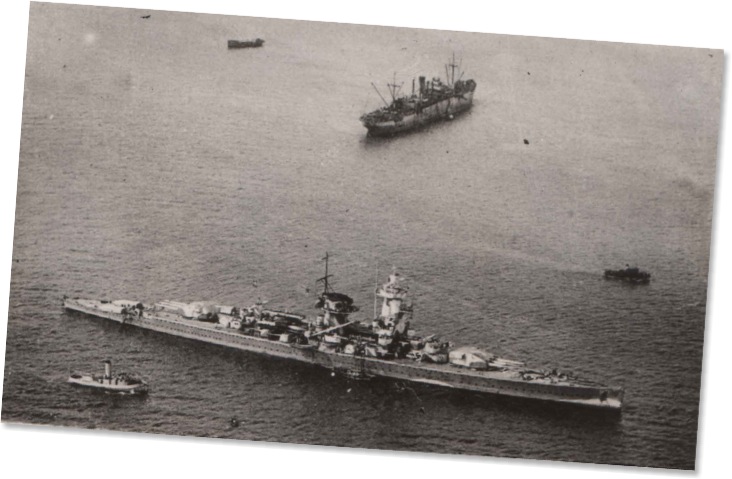
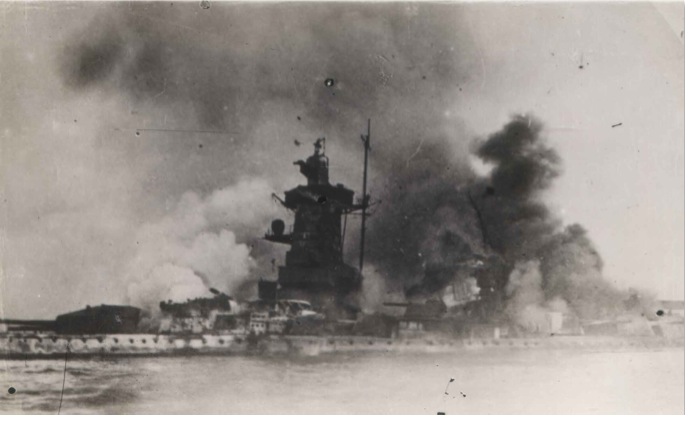
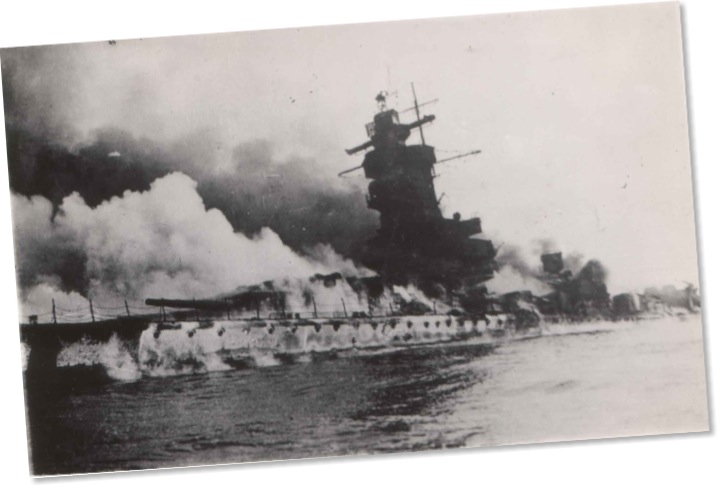
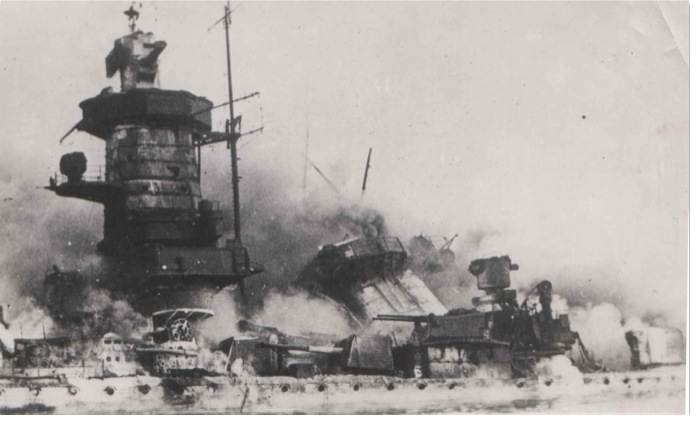
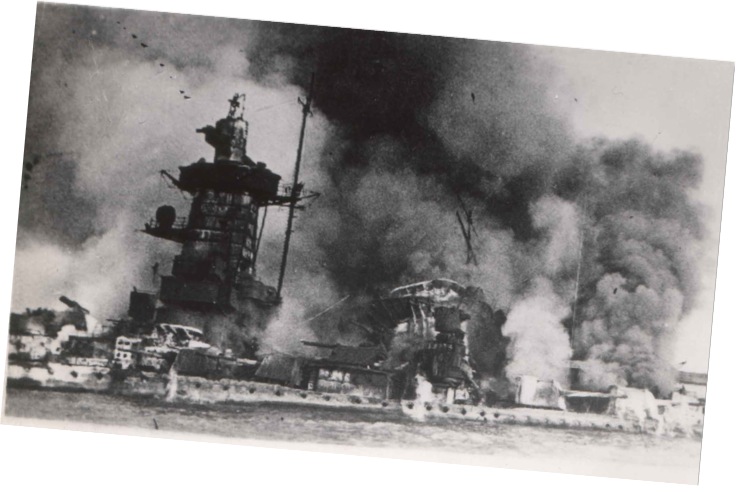
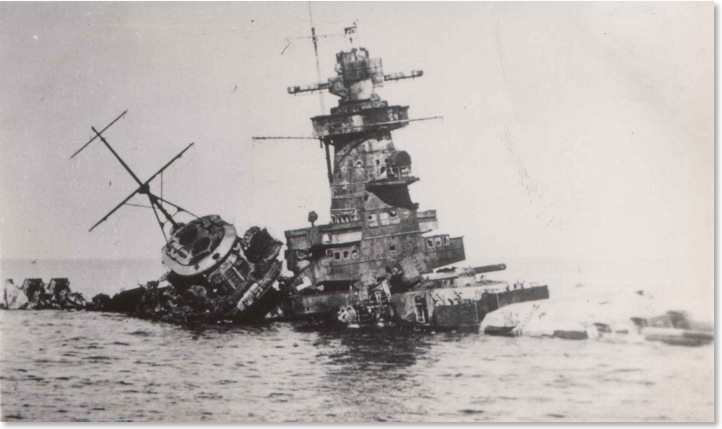
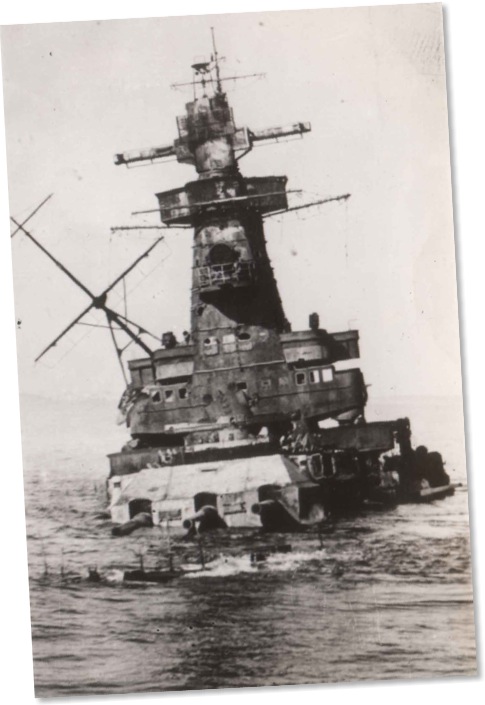
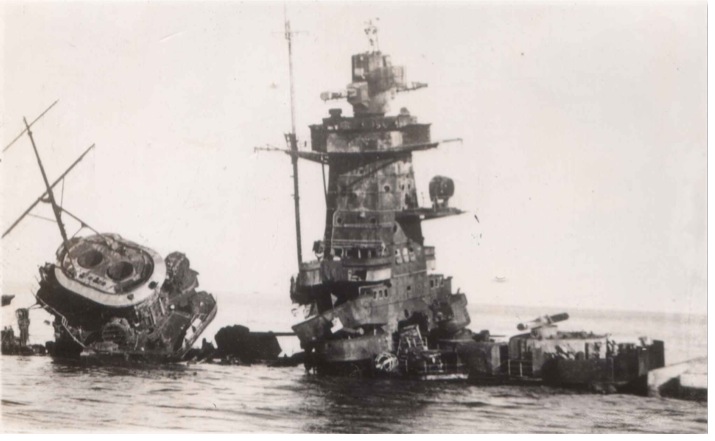
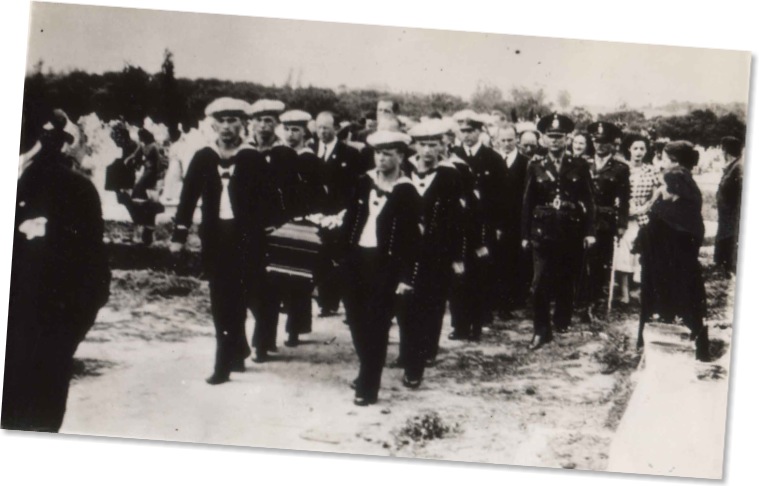
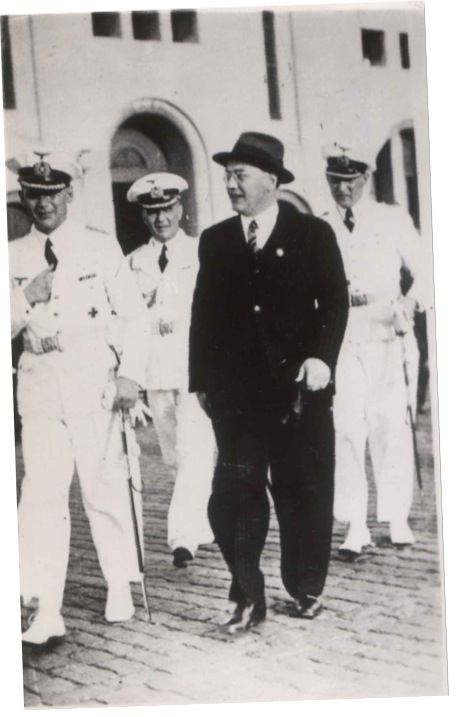
When we arrived
in England from the Far East, we went to Portsmouth, where
we saw a lot of bomb destruction in the shipyard. I was
given leave and on arrival home I found that Ninian (my
Brother) had been killed on an armed merchant cruiser at
Weymouth. On my way home I found Jess’s address in my ditty
box so I dropped her a short letter. Little did I know that
she was now in London. The postman in Sunderland knew of
her address and forwarded the letter to her. This is how we
got in touch again, which began a correspondence that
continued until our marriage.
On arriving back from leave I was promoted to Acting Petty
Officer. As the ship was manned by regular Royal navy
sailors, 50% were drafted off the ship and replaced by
“hostilities” (war time only) who would have only trained
just before going to sea. On one of the training stints at
sea with CPO Spratley, he sent for me, saying “You have
seen the covered up object on ‘B’ turret? I would like you
to test it for me as it is a new part of our armament. It
is a U.P. (Un-bored Projectile) unit to fire against
attacking aircraft.” On closer inspection it consisted of
24 units – 12 painted green and 12 painted red, so that
when lined up to the ship facing forward the green was to
port and the red was to starboard. It could only bear to
the beam forward of the bridge on either side and was
loaded with rockets. The rockets each had an explosive
charge that exploded when they reached a certain height
permitting a parachuted smaller charge to drift downwards
and if an aircraft came into that area and hit the
parachute line the charge would be drawn downwards and
explode on the wing or body. I eventually carried out
trials with a hat and full body cover. I found that when I
fired the flash back was quite frightening. I never did
find out if it became an accepted form of defense given to
other ships.
On finishing our trials we were sent to Scapa Flow, the
fleet anchorage in northern Scotland. Our designated patrol
area was the North Atlantic and areas of convoy sailings.
We were at our northern area, about 72 degrees north, when
we received information that the Scharnost and Gneisenau
were both at sea. A county class cruiser had made contact
but the weather was so bad that they kept losing it due to
fog. We went to full action stations in case they tried to
double back to either a Norwegian port or their homeport.
It was also reported that HMS Hood had engaged the German
navy ship the Bismark but within a few minutes the
startling news came through that the Hood had been sunk.
This really shook our ships company. As the day progressed
we found out that only 3 persons had been rescued of which
one was a future friend – a signalman I met a few years
later at Portsmouth.
We continued on our northern patrol 72 North in the
Greenland Sea and Denmark Straights area. We had been
warned that you always wore gloves on the upper deck,
because the metal (breakwater) was so cold that if you
touched it with your bare hands it would burn you and peel
the skin off. To further enhance the danger from the
extreme cold the survival time if immersed in the sea was
about 3 minutes. It was surprising how fast some of the
rigging and guardrails iced up.
On our return to Scapa Flow we had a few days rest and then
we were detailed to sail to Glasgow to pick up a detail of
the “Green Howards” British Army. On slipping our berth we
were informed in company with HMS Glasgow that we were on
our way to Norway to a place called Andelsnes. We arrived
in the fjord steaming at full speed. The drop area was
right at the top of the fjord. The Glasgow was dispatched
to Molde, to collect as we later found out, the Norwegian
gold reserve. Whilst berthing at our destination we came
under attack from high level bombing and Stuka
dive-bombing. During these attacks we landed the Green
Howards. By the time they had reached the populated area
they were engaged by German troops. We dispatched half of
our detachment of Royal Marines to assist the Green Howards
but before long we were told to slip our berth and proceed
to sea. Unfortunately we had to leave some of the Royal
Marines detachment who gave us a farewell salute as we
departed. We had only managed to pick up a few of the Green
Howards, as once again we came under attack from Stukas,
who we later thought were directed by Quisling (traitor)
Norwegians. We joined the other cruiser and proceeded down
the fjord when suddenly there was a mighty explosion
between the two cruisers. We were told later that they were
probably controlled mines and that they had misjudged the
space between the two cruisers. Whilst under attack,
Commander Lees controlled the movements of the ship
altering course on seeing the release of bombs from the
attacking aircraft. He did this by lying on a deckchair and
watching the attack through binoculars. We ran the gauntlet
back to sea and then back to Glasgow, where we discharged
the Green Howards that we had managed to take
onboard.